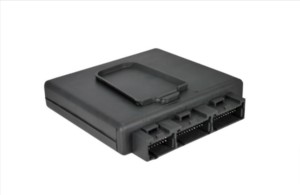The Body Control Module (BCM) is a critical component in modern vehicles, responsible for managing a wide range of electrical functions. From power windows and door locks to lighting and security systems, the BCM acts as the central hub for these essential operations. Sometimes, a malfunctioning BCM requires reprogramming. This guide will delve into the process of reprogramming a BCM, outlining common reasons, steps involved, and important considerations.
 alt
alt
Why Reprogram a BCM?
Several situations may necessitate reprogramming a BCM. These include:
- Software Updates: Manufacturers release updates to improve functionality, fix bugs, or add new features. Reprogramming the BCM with the latest software ensures optimal performance.
- Malfunctions: A corrupted or faulty BCM software can lead to erratic behavior in various vehicle systems. Reprogramming can often resolve these issues.
- Component Replacement: When replacing a BCM or related components, reprogramming is crucial to ensure proper communication and functionality within the vehicle’s network.
- Aftermarket Modifications: Certain aftermarket modifications, such as adding remote start or alarm systems, may require BCM reprogramming for seamless integration.
- Battery Replacement or Electrical Issues: Sometimes, a simple battery replacement or an electrical surge can disrupt the BCM’s settings. Reprogramming can restore factory defaults.
Reprogramming a BCM: Step-by-Step Instructions
Reprogramming a BCM often requires specialized tools and software. While the exact procedure varies depending on the vehicle make and model, here’s a general overview:
-
Preparation: Disconnect the negative battery terminal. This precaution prevents electrical damage during the process. Gather necessary tools, including a compatible scan tool with reprogramming capabilities and the appropriate software for your vehicle.
-
Vehicle Identification: Connect the scan tool to the vehicle’s OBD-II port and accurately identify the vehicle’s make, model, and year. This ensures you download the correct software.
-
Software Download: Download the latest BCM software update from the manufacturer’s website or a reputable source. Ensure a stable internet connection for a smooth download.
-
Reprogramming Process: Follow the on-screen instructions provided by the scan tool software. This typically involves uploading the new software to the BCM. Ensure the vehicle’s ignition is on but the engine is off during this process.
-
Verification: After the reprogramming is complete, verify the success by checking the BCM’s functionality. Test all related systems, such as lights, locks, and windows.
Important Considerations and Precautions
Reprogramming a BCM is a delicate process that requires careful attention. Here are some crucial considerations:
-
Professional Assistance: If you are not comfortable with the process or lack the necessary tools and expertise, it’s highly recommended to consult a qualified automotive technician. Improper reprogramming can potentially damage the BCM or other vehicle systems.
-
Power Supply: Ensure a stable power supply throughout the reprogramming process. A power interruption can corrupt the software and render the BCM unusable. Use a battery maintainer if necessary.
-
Software Compatibility: Double-check the compatibility of the software with your specific vehicle make, model, and year. Using incorrect software can lead to serious problems.
-
Backup Existing Data: Before reprogramming, consider backing up any existing data or settings stored in the BCM, if possible. This can be helpful in case of unforeseen issues.
Conclusion
Reprogramming a BCM is essential for maintaining optimal vehicle performance and resolving various electrical issues. By understanding the reasons for reprogramming, following the correct procedure, and taking necessary precautions, you can ensure a successful outcome. If in doubt, seek professional assistance to avoid potential complications. Remember, a properly functioning BCM is vital for the safe and reliable operation of your vehicle.
